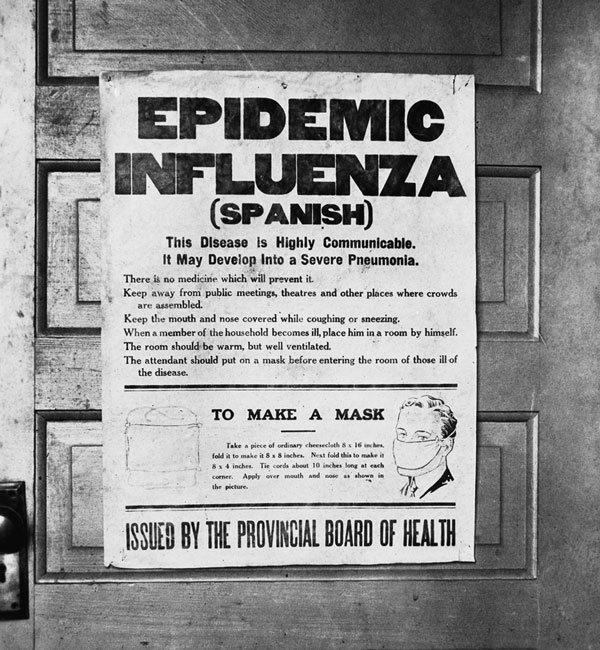As Canada finds itself in the midst of the COVID-19 pandemic, it’s useful to look at how the federal government handled the Spanish Flu pandemic over a century ago.
The Spanish Flu spread through Canada in 1918, killing about 55,000 people out of a population of eight million, most of whom were young adults between the ages of 20 and 40. This was in addition to the more than 60,000 Canadians killed in service during the First World War (1914-18).
Ottawa was criticized for failing to provide resources and co-ordination to public health authorities across the country during the Spanish Flu pandemic, states the Government of Canada website. The federal government responded to the crisis by founding the Department of Health.

“Inadequate quarantine measures, powerlessness against the illness and a lack of co-ordinated efforts from health authorities led to unsurmountable chaos,” states the website.
“The Spanish Flu was a significant event in the evolution of public health in Canada. It resulted in the creation of the federal Department of Health in 1919, which established a partnership between the various levels of government and made public health a joint responsibility in which the state played a prominent role.”
According to a Library and Archives Canada blog, before that time, public health was primarily the responsibility of provincial and local authorities, with the federal government co-ordinating quarantine services as a branch within other larger departments.
The Spanish Flu, which is said to have originated in China, was called the Spanish Flu because it was first recognized as a disease in Spain. It hit Canada between 1918 and 1920. According to a National Post article, published Dec. 21, 2018, the Canadian government’s “incompetence” and “refusal to take charge of the response,” exacerbated the situation.
“When authorities in explosion-battered Halifax requested Ottawa’s assistance to deal with the arrival of several flu-laden ships, they received a terse reply that disease outbreaks aboard vessels ‘come under municipal or provincial jurisdiction not federal,’ ” states the article. “In fact, federal bureaucrats would repeatedly intervene to make the crisis worse. The army continued door-to-door conscription drives throughout the crisis, spreading the virus into uninfected homes. Troopships were turned into floating tombs after they were knowingly filled with sick soldiers.”
Much of the spread was attributed to troops returning home from the war taking train routes to their hometowns.
“At regular intervals the train dropped off batches of infected soldiers who were then carried into urban hospitals,” states the article. “Calgary, Edmonton, Vancouver and innumerable rural communities all owed their first flu cases to this single train.”
The Canadian Encyclopedia reported municipal governments closed all services except necessary ones to try and curb the spread of the disease. Provinces enacted laws regarding quarantine and enforced the wearing of masks in public.
“Although the Canadian population unhappily accepted these restrictions, it defied the federal government’s request that First World War victory celebrations be postponed until 1 December 1918,” states the Canadian Encyclopedia.
Follow the author on Twitter @DCN_Angela.











Recent Comments